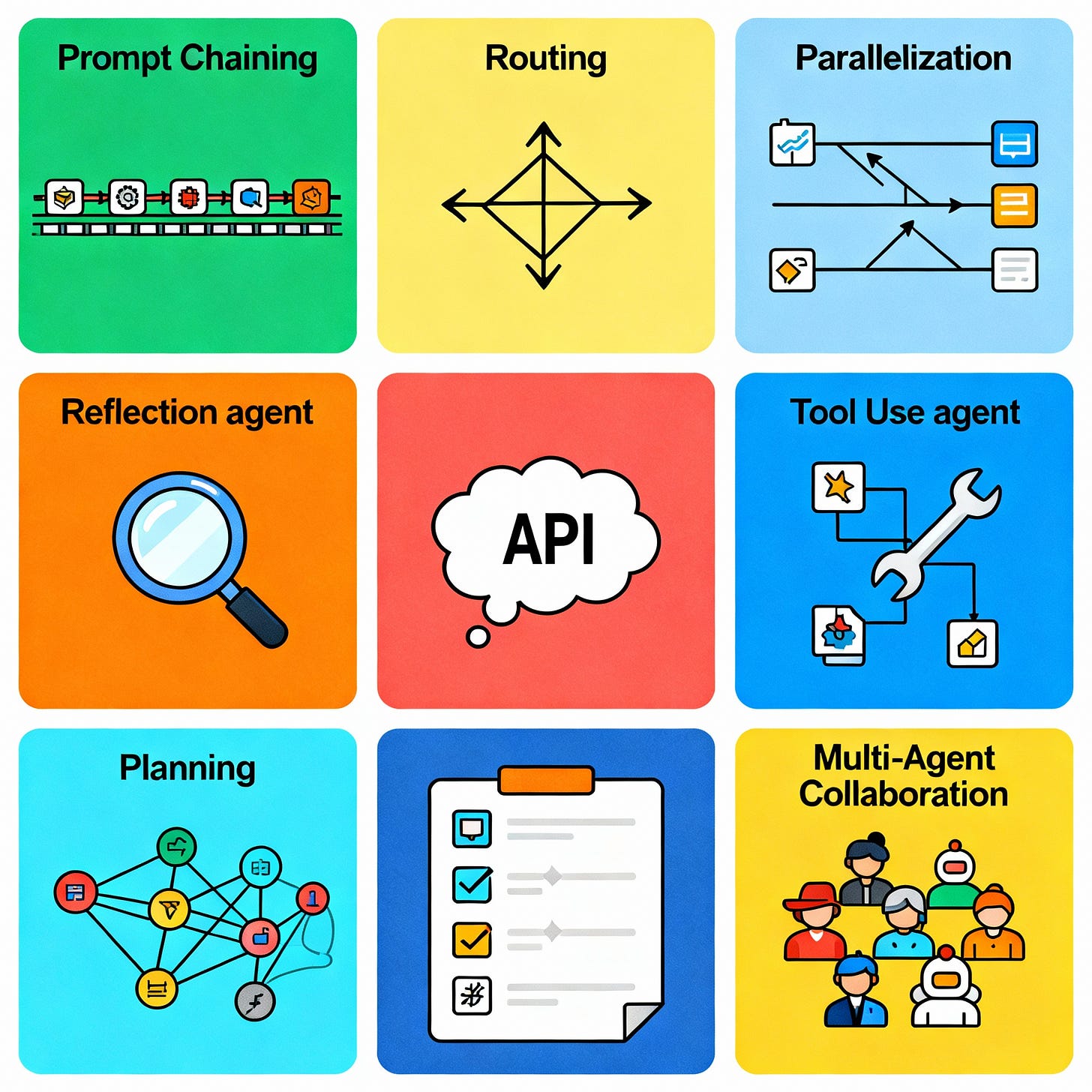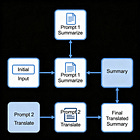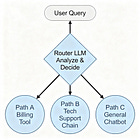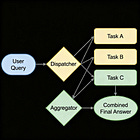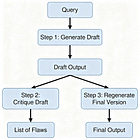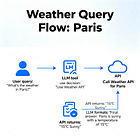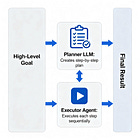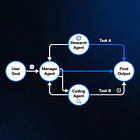Core Agentic Design Patterns (Part 1)
Your Toolkit for Building Real AI. From simple workflows to intelligent agents.
The 7 Core Patterns of AI Agents (Part 1)
Welcome to the foundational guide on Agentic Design Patterns. If you're building with AI, you've moved past simple chatbots and are now tackling a bigger question: How do you make an AI that can actually do things reliably and intelligently? The answer lies not in a single massive prompt, but in a set of powerful, reusable strategies called agentic patterns.
Your Toolkit for Building Real AI. From simple workflows to intelligent agents.
This article is your guide to the seven core patterns that form the "execution engine" of any sophisticated AI agent. These are the fundamental building blocks for creating applications that can plan, act, improve, and solve complex problems. Understanding them is the first step to building truly autonomous systems.
1. Prompt Chaining: The Assembly Line
Function: Creates a sequence of steps by linking LLM calls together, using one output as the next input to build a complex result reliably.
Prompt Chaining is the simplest yet most crucial pattern. Instead of asking an AI to do a complex task in one go (like writing and formatting a report), you break it down. Step one generates the content, step two formats it, and step three checks it for errors. This assembly line approach ensures each stage is done perfectly, leading to a far more reliable outcome.
Key Takeaway: For any multi-step, sequential task, choose chaining over a single, complex prompt.
2. Routing: The Decision-Maker
Function: Analyzes an incoming query and intelligently selects the best tool or workflow to handle it, enabling flexible and efficient task management.
A smart agent doesn't use a hammer for every nail. Routing gives your agent a brain, allowing it to analyze a request and choose the right tool for the job. Is the user asking for math? Route to the calculator. Are they asking about current events? Route to the web search tool. This makes your agent efficient, capable, and intelligent.
Key Takeaway: When your agent has multiple tools or skills, use a router to decide which one to use and when.
3. Parallelization: The Optimizer
Function: Executes independent tasks simultaneously to drastically reduce the total time required to gather diverse information or generate multiple perspectives.
When tasks don't depend on each other, waiting to do them one-by-one is a waste of time. Parallelization lets your agent run multiple queries at once. To compare two products, it can research both simultaneously. This pattern is all about speed and efficiency, transforming a slow, methodical agent into a fast, responsive one.
Key Takeaway: If sub-tasks are independent, run them in parallel to dramatically cut down on user wait time.
4. Reflection: The Quality Inspector
Function: Improves the quality and accuracy of outputs by having the agent critically review and refine its own work before finalizing it.
Even the best AI makes mistakes. The Reflection pattern builds a "quality check" step directly into your workflow. The agent generates a first draft, then a separate "critic" prompt reviews that draft for errors, logical flaws, or style issues. Finally, the agent rewrites the output based on that feedback. It's the AI equivalent of "measure twice, cut once."
Key Takeaway: For high-stakes tasks that demand accuracy (like writing code or a legal summary), always use a reflection step.
5. Tool Use: The Bridge to the World
Function: Allows an agent to interact with external systems, APIs, and data sources, giving it real-world capabilities beyond its static knowledge.
An LLM's knowledge is frozen in time and locked within itself. Tool Use is the pattern that breaks it out of that box. By giving your agent "tools"—like the ability to search the web, access a database, or connect to a weather API—you ground it in real-time, factual information and give it the power to take action.
Key Takeaway: If your agent needs to know anything about today's world or your private data, it needs tools.
6. Planning: The Strategist
Function: Breaks down a large, complex goal into a coherent, step-by-step plan before execution, enabling the agent to tackle ambiguous and multi-faceted problems.
How would you tackle a request like "plan a marketing campaign"? You'd make a plan first. This pattern gives that same strategic ability to an AI. A "Planner" LLM looks at the high-level goal and creates a checklist of steps. Then, an "Executor" agent carries out those steps one by one. This allows agents to handle big, ambiguous goals with clarity and purpose.
Key Takeaway: For any complex, multi-step goal, have the agent create a plan before it starts working.
7. Multi-Agent Collaboration: The Team
Function: Solves a problem by orchestrating a team of specialized AI agents that work together, with each agent handling a specific part of the task.
Why hire one generalist when you can have a team of experts? This advanced pattern creates a system of specialized agents that collaborate. A "researcher" agent can find information, a "writer" agent can draft content, and a "critic" agent can review it. By simulating a real-world team, you can solve incredibly complex problems and produce highly refined outputs.
Key Takeaway: For very complex tasks that benefit from multiple perspectives, assemble a team of specialized agents.
Why This Matters
These seven patterns are not mutually exclusive; they are Lego bricks. A sophisticated agent might use a Router to decide it needs to make a Plan. The Executor for that plan might use Tools and run some of them in Parallel. Before finishing, the agent might use Reflection to check its work. Understanding how to combine these patterns is the true art of building powerful AI.
Coming Soon...
This concludes our overview of the core execution patterns. Stay tuned for Part 2, where we'll dive into the advanced reasoning patterns that power an agent's "thinking" process, such as Chain of Thought and Tree of Thoughts



